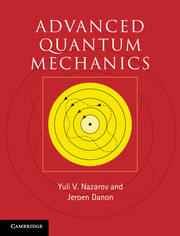5 - Superconductivity
from Part II - Examples
Published online by Cambridge University Press: 05 February 2013
Summary
The next example of second quantization techniques we consider concerns superconductivity. Superconductivity was discovered in 1911 in Leiden by Kamerlingh Onnes, in the course of his quest to achieve ultra-low temperatures. He was applying freshly invented refrigeration techniques to study the low-temperature behavior of materials using every method available at that time. The most striking discovery he made, was that the electrical resistance of mercury samples abruptly disappeared below a critical temperature of 4.2 K – the metal underwent a transition into a novel phase.
After this first discovery, superconductivity has since been observed in a large number of metals and metallic compounds. Despite long-lasting efforts to find a material that is superconducting at room temperature, today superconductivity still remains a low-temperature phenomenon, the critical temperature varying from compound to compound. A huge and expensive quest for so-called high-temperature superconductivity took place rather recently, in the 1980s and 1990s. Although the record temperature has been increased by a factor of 5 during this time, it still remains as low as 138 K.
The most important manifestation of superconductivity is of course the absence of electrical resistance. In a superconductor, electric current can flow without any dissipation. Such a supercurrent, once excited in a superconducting ring, would in principle persist forever, at least as long as the superconductivity of the ring is preserved.
- Type
- Chapter
- Information
- Advanced Quantum MechanicsA Practical Guide, pp. 113 - 134Publisher: Cambridge University PressPrint publication year: 2013

